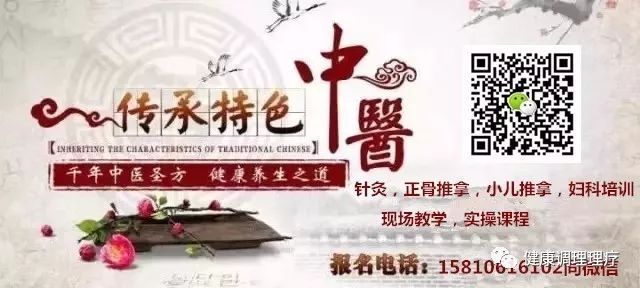Facial Diagnosis
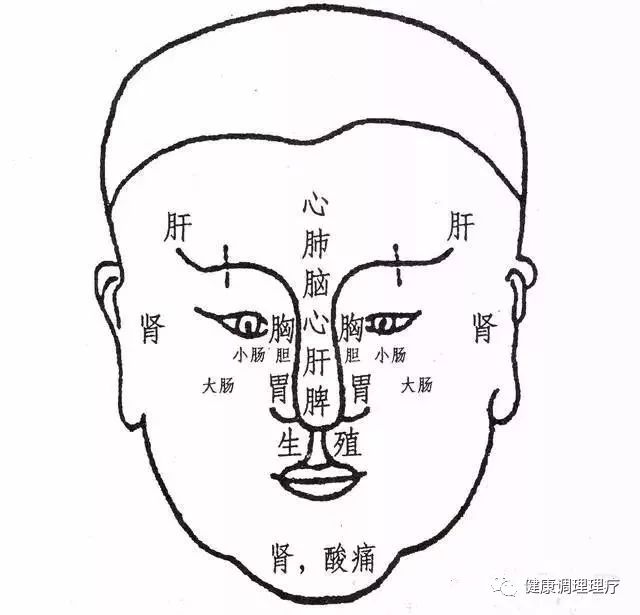
Facial Diagnosis, as the name suggests, is a diagnostic technique that observes a person’s facial features to assess the health of their internal organs, specifically the five zang and six fu. “Observation” is one of the four diagnostic methods in Traditional Chinese Medicine (TCM), which has been practiced for thousands of years. To master the technique of facial diagnosis, one must first learn the foundational theories of the five elements in TCM.
The Huangdi Neijing (Yellow Emperor’s Inner Canon) states that heaven represents the macrocosm, earth the mesocosm, and humans the microcosm. The five elemental energies of wood, fire, earth, metal, and water found in heaven and earth correspond to the five zang and six fu in the human body. “Humans correspond with heaven and earth, and resonate with the sun and moon.”
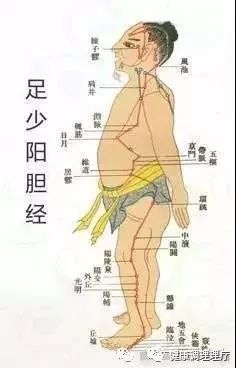

Wood
Wood ranks first, representing the power of growth and development. During childhood, we encourage activities like running, basketball, high jumps, and skipping rope. These activities actually exercise and stretch the gallbladder meridian (足少阳胆经, zú shǎo yáng dǎn jīng) along the sides of the thighs, enhancing the gallbladder’s growth function and promoting better development. The Huangdi Neijing states: “The east generates wind, wind generates wood, wood generates sour, sour generates liver; the liver belongs to wood.”

Wood corresponds to the east, its color is green, and it corresponds to the liver among the five zang and the gallbladder among the six fu. It opens to the eyes, its manifestation is in the nails, its emotion is anger, its taste is sour, and its season is spring.
When we think of the sun rising in the east, we recognize that the east symbolizes growth, and in spring, all trees sprout. The liver qi rises smoothly, and even a child who knows nothing about medicine might say, “Don’t bother me, I’m feeling liver qi stagnation.” Thus, the smooth rising of liver qi is responsible for detoxification.
Women with uterine fibroids often experience pent-up anger and emotional distress, leading to blockages in the liver meridian, as the liver meridian (足厥阴肝经, zú jué yīn gān jīng) runs around the reproductive organs. Breast hyperplasia and breast cancer are also related to anger, as the spleen meridian (足太阴脾经, zú tài yīn pí jīng) runs through the female breast. Anger harms the liver, causing liver qi stagnation, which in turn affects the spleen. For instance, when we get angry, we often lose our appetite, which is a manifestation of liver harming the spleen and stomach.
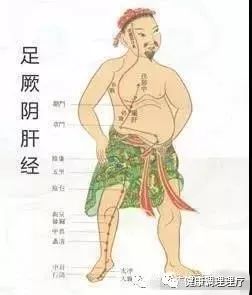
When the liver’s energy is particularly strong, it retains the green color within the body. When the liver’s energy is insufficient and the burden increases, it cannot hold onto the green color, which naturally manifests on the face. Therefore, when we stay up late, “the blood is stored in the liver”; from 1 AM to 3 AM, the liver meridian is active, and one needs to lie down to allow more qi and blood to nourish the liver. Staying up late is particularly harmful to the liver, causing the face to appear green. When drinking alcohol, the liver is responsible for detoxification, and excessive drinking increases the burden on the liver, causing the face to also appear green. Thus, one can initially assess a person’s liver and gallbladder function based on their complexion.
Eye problems are related to the liver and gallbladder; cloudy or red eyes indicate weak liver detoxification and liver heat.
The liver manifests in the nails; vertical ridges, pits, and dullness in the nails indicate poor liver function.
The liver’s reflex area is located in the center of the nose bridge; dark, greenish, spotted, or wrinkled areas in this region are signs of poor liver function.
The area between the eyebrows extending outward to the temples is also a reflex area for the liver and gallbladder; spots or impurities in this area can indicate poor liver function. The reflex area for the gallbladder is located on either side of the nose bridge; spots or black dots in this area signify poor gallbladder function.
Pregnant women often crave sour foods because the liver of a pregnant woman bears the detoxification burden for two people. Sour flavors can help gather the liver’s energy and assist in detoxification. However, excessive sourness can lead to excessive liver qi, which can harm the spleen. Sour flavors are astringent, and tendons should be soft rather than constricted; patients with tendon diseases should avoid excessive sourness.
Wood generates fire; the gallbladder wood generates heart fire, and liver wood generates small intestine fire, with the heart belonging to fire. Fire represents the upward and rising force. The Huangdi Neijing states: “The south generates heat, heat generates fire, fire generates bitterness, bitterness generates the heart; fire corresponds to the south, its color is red, corresponding to the heart among the five zang and the small intestine among the six fu, opening to the tongue, manifesting in the face, its emotion is joy, its taste is bitterness, and its season is summer.”
When heart function is weak and heart qi is insufficient, it cannot retain the red color within the heart, leading to a pathological flush on the face, typically appearing on the cheeks and even the forehead. This flush lacks luster and can appear rusty or dull red. Many people with a rosy complexion sitting there smiling may actually be showing signs of cardiovascular disease, often indicating high blood pressure or heart disease. Observing the area between the eyes and the nose can help assess whether there are impurities or horizontal lines, indicating the severity of stagnation around the heart and pericardium; the deeper the lines, the more severe the stagnation.
The heart opens to the tongue; if one extends their tongue and it unconsciously tilts to one side, it indicates a potential heart issue or a sign of stroke.
Bitterness is the taste associated with the heart; those who love coffee may actually be experiencing heart qi deficiency, as moderate bitterness can help gather the heart’s energy.
Excessive bitterness can lead to dryness in the spleen and thin stomach qi, harming lung qi. Bitter flavors are drying, and blood does not favor dryness; patients with blood disorders should avoid excessive bitterness.
Fire generates earth; heart fire generates stomach earth, and small intestine fire generates spleen earth, with the spleen belonging to earth.
Earth represents the power of transformation. The Huangdi Neijing states: “The center generates dampness, dampness generates earth, earth generates sweetness, sweetness generates the spleen.”
Earth corresponds to the center, its color is yellow, corresponding to the spleen among the five zang and the stomach among the six fu, opening to the lips, manifesting in the muscles, its emotion is thought, its taste is sweetness, and its season is late summer.
People with poor spleen and stomach function have loose muscles and pale lips. The spleen and stomach are the mother of postnatal health; poor spleen and stomach function can lead to many chronic diseases that are difficult to heal. When the spleen and stomach function is weak, they cannot retain the yellow color within, leading to a naturally yellowish complexion.
The spleen governs all the muscles; if the spleen is ill, the body’s muscles will also have issues, such as symptoms of muscle weakness or severe myasthenia gravis.
The spleen governs blood; “governing” means to regulate. Women’s menstrual irregularities, excessive bleeding, and continuous bleeding are all related to the spleen’s inability to govern blood. A woman’s irregular menstruation or amenorrhea is also related to insufficient blood production and qi deficiency in the spleen.
The Huangdi Neijing states that the spleen is the official of advice, knowing the surroundings. This means that the spleen not only produces and governs blood but also advises the heart (the sovereign). The spleen is very aware of where there are issues in the body and will quickly advise the heart.
However, modern people often overeat, which has already harmed the spleen and stomach. The spleen’s advisory function is lost, and thus when modern people fall ill, it often leads to severe diseases because the spleen no longer has the function to advise.
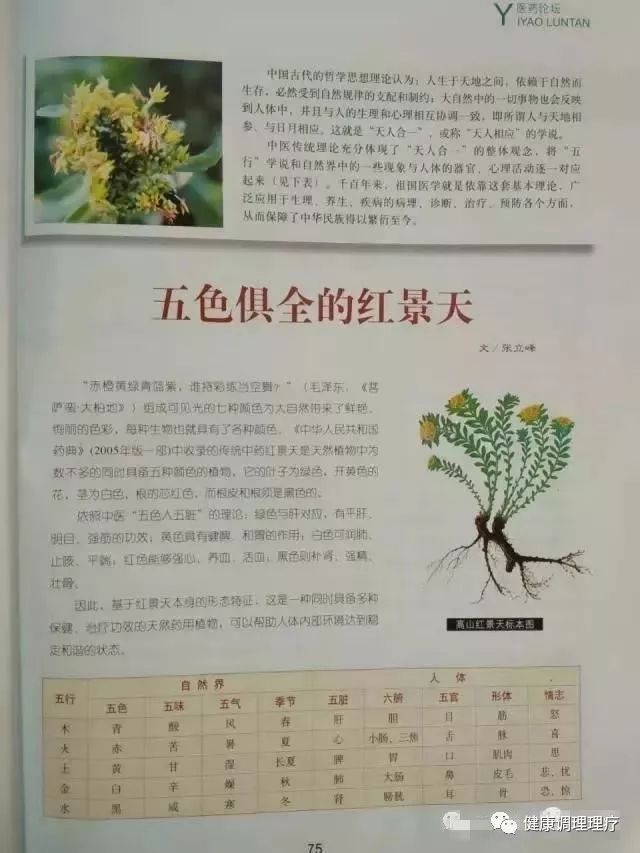
Why is Rhodiola rosea (红景天, hóng jǐng tiān) called the “mute doctor”? It is because the yellow flowers of Rhodiola rosea absorb the energy of volcanic ash that has accumulated in the black soil of Changbai Mountain for millions of years. It can regulate the spleen and stomach and activate the spleen’s advisory function. Additionally, the five colors correspond to the five zang, harmonizing them; after consuming it, the body will quickly respond, and all discomfort signals are actually the spleen’s advisory function at work, allowing us to detect minor health issues in time and prevent them from becoming serious problems.
The reflex area of the spleen is located at the tip of the nose; rosacea is primarily a spleen issue, with spots and redness in this area indicating spleen disease.
The reflex area of the stomach is located on both sides of the nose at the nostrils; enlarged pores, redness, or bumps in this area indicate stomach issues.
Children and some women love sweet foods, which is due to insufficient spleen and stomach function; sweet flavors can help gather the energy of the spleen and stomach. However, excessive sweetness can harm the kidneys, leading to a dark complexion and weak kidney qi. Sweet flavors nourish flesh, and those with muscle diseases should avoid excessive sweetness.
Earth generates metal; spleen earth generates large intestine metal, and stomach earth generates lung metal, with the lungs belonging to metal.
Metal represents the power of contraction and collection. The Huangdi Neijing states: “The west generates dryness, dryness generates metal, metal generates pungency, pungency generates the lungs.”
Metal corresponds to the west, its color is white, corresponding to the lungs among the five zang and the large intestine among the six fu, opening to the nose, manifesting in the skin and hair, with the lungs governing hair and the large intestine governing skin, its emotion is worry, its taste is pungent, and its season is autumn.
People with insufficient lung qi and poor lung function cannot retain the white color within the lungs, leading to a pathological pallor on the face. In Dream of the Red Chamber, Lin Daiyu’s pale complexion and melancholic nature, leading to her death from tuberculosis, exemplifies this.

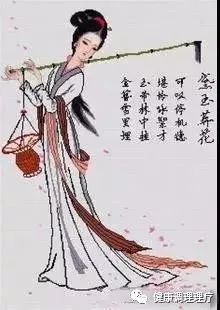
People with weak lung qi and poor lung function have enlarged pores, and cold exposure directly affects the lungs, leading to symptoms like coughing and runny nose, which are signs of the body expelling cold.
The reflex area of the lungs is located on the forehead; any depressions, spots, or vertical lines in this area indicate lung disease.
Those who love spicy foods may have insufficient lung qi. Pungent flavors nourish lung qi, and lung qi nourishes the skin. Excessive spiciness can weaken the tendons and spirit, suppressing the liver’s growth, as pungent flavors disperse, and qi prefers to gather rather than disperse; patients with qi diseases (e.g., asthma, heart-lung diseases) should avoid excessive spiciness.
Metal generates water; lung metal generates bladder water, and large intestine metal generates kidney water, with the kidneys belonging to water.
Water represents the power of storage and attraction. The Huangdi Neijing states: “The north generates cold, cold generates water, water generates salt, salt generates the kidneys.”
Water corresponds to the north, its color is black, corresponding to the kidneys among the five zang and the bladder among the six fu, opening to the ears, manifesting in the hair, its emotion is fear, its taste is salty, and its season is winter.
When elderly individuals have insufficient kidney function, they tend to prefer salty flavors, as salty flavors enter the kidneys and nourish the bones, activating kidney energy. However, excessive salt can soften hardness, and bones prefer hardness; excessive salt can harm the bones and suppress heart qi.
When kidney function is weak and kidney qi is insufficient, they cannot retain the black color within the kidneys, leading to a dark or dull complexion. Individuals with poor kidney function may have yellowing hair, split ends, and issues like tinnitus, hearing loss, or ear deafness.
The reflex area of the kidneys is located on both sides of the cheeks; age spots often appear here, indicating weakened kidney function.
The human body has three burners: the upper burner (heart and lungs), the middle burner (spleen and stomach), and the lower burner (liver and kidneys). The face has three sections: the upper section extends from the hairline to the glabella and the eyebrows, the middle section from the glabella to the tip of the nose, and the lower section from the philtrum to the chin. This corresponds to heaven, humanity, and earth.
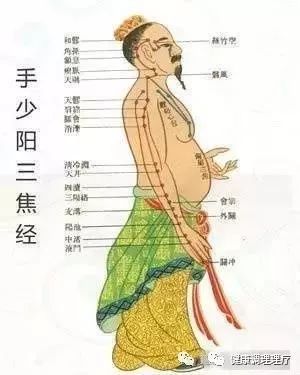
Thus, the upper section corresponds to the upper burner (heart and lungs), the middle section corresponds to the middle burner (spleen and stomach), and the lower section corresponds to the lower burner (liver and kidneys).
Therefore, if one has bumps or redness on the chin, it may indicate kidney cold or gynecological issues, and blockages in the liver meridian. In men, it may indicate kidney cold, insufficient kidney water, or weak kidney function.
Cold represents the power of contraction, symbolizing gathering energy. Sufficient cold helps to gather kidney energy. Why do northern people tend to be taller while southern people are generally shorter? It is because the winters in the north are colder, which helps to gather kidney energy. TCM states, “The kidneys govern bones, bones produce marrow, and marrow produces blood.” When kidney energy is sufficient, the bone marrow is full, and qi and blood are abundant, aiding in growth and development.
The kidneys are the source of innate vitality, the spleen and stomach are the mother of acquired vitality, and the heart is the sovereign that governs the eleven zang and fu.
For a person to be healthy and live long, it is essential to preserve kidney essence, nourish the spleen and stomach, and protect the heart.
TCM states, “With stomach qi, there is life; without stomach qi, there is death.” This highlights the importance of the spleen and stomach. Folklore also states that when a person dies, it is like an oil lamp extinguishing; the oil represents the kidney essence, and the lamp represents the fire of the heart. When a person’s essence is exhausted, the heart stops beating, signifying the end of life. Therefore, health and longevity depend on nourishing the spleen and stomach and protecting the heart and kidneys.
The technique of facial diagnosis is a TCM diagnostic method that spreads great love. By learning facial diagnosis, we can not only timely discover our own and our family’s health issues but also provide reminders about health conditions to those around us who may not understand TCM.
TCM advocates “the best doctor treats the unill” and can even detect potential illnesses. We should not be afraid of making mistakes, as many people are actually ignorant of the health of their five zang and six fu. We should speak boldly and courageously; what we see in facial diagnosis are functional changes that far exceed the organic changes diagnosed by modern medical technology. By the time organic changes develop, our health status may already be beyond repair.
